Samsung Electronics Co 1160L Mulit-Function Printer User Manual 00 Cover Eng Ricoh
Samsung Electronics Co Ltd Mulit-Function Printer 00 Cover Eng Ricoh
Contents
- 1. USERS MANUAL 1
- 2. USERS MANUAL 2
USERS MANUAL 2

2.10 Stand-alone Fax
Sending a Fax Automatically
1. After loading a document, enter the number of the remote fax using
the keypad.
One-touch or speed dialling is also available if you have already
stored the number into a one-touch or speed dial number. For
information on storing and using numbers in the memory, see page
2.18.
If you make a mistake while entering a number, press
Search/Delete to delete the number.
2. Press Start/Enter when the number appears correctly on the display.
The machine dials the number and begins to transmit.
Cancelling a Transmission
Press Stop any time during transmission. The machine continues to send
the fax and the display shows a message warning that the machine is in
use. Press Stop again.
Confirming a Transmission
When the last document has been sent successfully, the machine beeps
and returns to the Standby mode.
If something went wrong during your fax transmission, an error message
appears on the display. For a listing of error messages and their
meanings, see page 5.5. When you receive an error message, press
Stop to clear the message and resend the document.
You can print out a confirmation report automatically each time sending
is completed. For more information, see `Setting User-Selectable System
Options’ on page 2.2.
Automatic Redialling
If the number you have dialled is busy or there is no answer, the
machine will automatically redial the number every three minutes up to
a maximum of two times.
The display shows ‘RETRY REDIAL?.’ To redial the number without
waiting, press Start/Enter. To cancel the automatic redialling, press
Stop.

2.11
Stand-alone Fax
Sending a Fax After Talking
You can send a fax after talking with the remote location.
1. After loading a document, pick up the handset of the extension
telephone and call the remote machine.
2. If the remote party answers, talk with her/him.
3. Press Start/Enter after you finish talking. The machine begins to
transmit.
4. Replace the handset.
Last Number Redialling
Press Pause/Redial with a document loaded in the feeder, the machine
begins to send.
The redial memory in your machine retains the last 10 numbers called.
To search through the redial memory, do as follows:
1. Press and hold Pause/Redial for about 2 seconds.
2. Press ➛or ❿to search through the memory until you find the desired
number.
3. When the desired number appears on the display, press Start/Enter
to dial.
Answering a Voice Request
When the phone rings after receiving a fax, pick up the external handset
and press Stop.
If the person at remote end is waiting with the handset lift up, you can
talk to the person.
If you do not answer the Voice Request, the machine prints out the
number that made the Voice Request, as well as the time and date that
the request was made.

2.12 Stand-alone Fax
About Reception Modes
Your machine has four reception modes:
• In FAX mode, the machine answers an incoming call and immediately
goes into receive mode.
• In AUTO mode, the machine answers an incoming call expecting to
receive a fax. If the machine does not sense a fax signal, it will
continue to sound the ringing tone to tell you it is a phone call. If you
do not lift the handset of the extension telephone during the ringing,
the machine will switch to automatic fax reception mode.
• In ANS/FAX mode, the answering machine answers an incoming call,
and the caller can leave a message on the answering machine. If the
fax machine senses a fax tone on the line, the call automatically
switches to the fax machine.
Note: To use the ANS/FAX mode, attach an answering machine to the
EXT. jack on the back of your machine (see page A.1).
• In TEL mode, the automatic fax reception is turned off. If you pick up
the extension telephone and hear fax tones, you can receive a fax by
pressing Start/Enter on the front panel of your machine.
• In DRPD mode, you can receive a call using the Distinctive Ring
Pattern Detection (DRPD) feature. “Distinctive Ring” is a telephone
company service which enables a user to use a single telephone line to
answer several different telephone numbers. This mode is displayed
when you have set up the distinctive ring pattern. For details on this
feature, see page 2.6.
Receiving a Fax
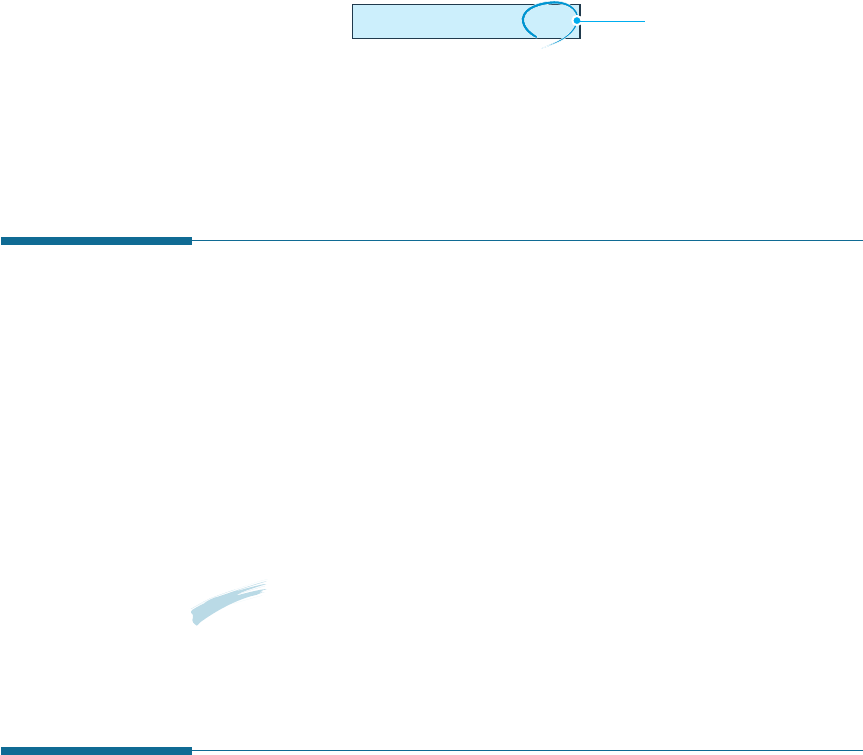
2.13
Stand-alone Fax
The current reception mode is displayed when the machine is in Standby
mode.
If you seldom use the fax line for voice conversations, set your
machine to receive a fax automatically by selecting FAX mode.
08-DEC 15:30 FAX
Current reception mode
Loading Paper for Receiving Faxes
The instructions for loading paper in the paper input tray are the same
whether you are printing, faxing, or copying, except that faxes can only
be printed on letter-, A4-, or legal-sized paper. See “Loading Paper” on
page 1.13 for instructions.
After loading paper for receiving faxes, set the paper size to the size of
paper you normally load in the paper input tray. This product uses this
setting when printing reports and determining autoreduction for incoming
faxes. See page 2.3 to set the paper size.
Note: As for MFP model, the printing function does not use this setting. If
you are loading special-sized media only for your current print job, do not
change this setting. After you have finished printing, reload the original
paper.
Receiving Automatically in FAX Mode
This machine is preset to FAX mode at the factory. If you have changed
the fax mode, take the following steps to receive faxes automatically:
1. Press and hold down Rcv. Mode/Contrast on the front panel
repeatedly until the display shows ‘FAX’.
2. When you receive a call, the machine answers the call on a specified
number of rings and receives a fax automatically. To change the
number of rings. See ‘Setting User-Selectable System Options’ on
page 2.2.
To adjust the ringer volume, see ‘Setting Volume’ on page 2.1.

2.14 Stand-alone Fax
Receiving Automatically in ANS/FAX Mode
For this mode, you MUST attach an answering machine to the EXT. jack
on the back of your machine (see page A.1).
1. Press and hold down Rcv. Mode/Contrast on the front panel
repeatedly until the display shows ‘ANS/FAX.’
2. When you receive a call, the answering machine will answer.
If the caller leaves a message, the answering machine stores the
message as it would normally. If your machine hears a fax tone on
the line, it automatically starts to receive fax.
Notes:
• If you have set your machine to ANS/FAX mode and your answering
machine is switched off, or no answering machine is connected to your
machine, your machine will automatically go into FAX mode after 6 rings.
• If your answering machine has a ‘user-selectable ring counter’, set the
machine to answer incoming calls within 1 ring.
• If you are in TEL mode (manual reception) when the answering machine
is connected to your machine, you must switch off the answering
machine, or the outgoing message from the answering machine will
interrupt your phone conversation.
Receiving in AUTO Mode
1. Press and hold down Rcv.Mode/Contrast on the front panel
repeatedly until the display shows ‘AUTO’.
2. When you get a call, the machine answers it.
If a fax is being sent, the machine goes into reception mode.
If the machine does not detect a fax signal, it will continue ringing to
tell you it is a phone call. You should pick up the handset of the
extension telephone and press Stop to answer the call, or it will
switch to automatic reception mode.

2.15
Stand-alone Fax
Receiving Manually in TEL Mode
You can answer calls using the handset of the extension telephone, and
start the machine to receive a fax.
1. Press and hold down Rcv.Mode/Contrast repeatedly until the display
shows ‘TEL.’
2. When the telephone rings, pick up the handset of the extension
telephone and answer it.
3. If you hear a fax tone, or if the person on the other end asks you to
receive a document, press Start/Enter.
4. Replace the handset of the extension telephone. The machine begins
receiving and returns to Standby mode when the reception is
complete.
Receiving Manually Using Remote Receive
Start Code
You can receive a fax from someone you are talking to on the extension
telephone without having to go to the fax machine.
1. When you receive a call on the extension phone and hear fax tones,
press the keys “ 9” (star nine star) on the extension telephone.
The machine receives the document.
Press the buttons slowly in sequence. If you still hear the fax tone
from the remote machine, try pressing “ 9” once again.
“ 9” is the remote receive start code preset at the factory. The
first and the last asterisks are fixed, but you can change the middle
number to whatever you choose. For more information, see page 2.5.
2. When you have finished speaking and receiving documents, replace
the handset of the extension telephone.
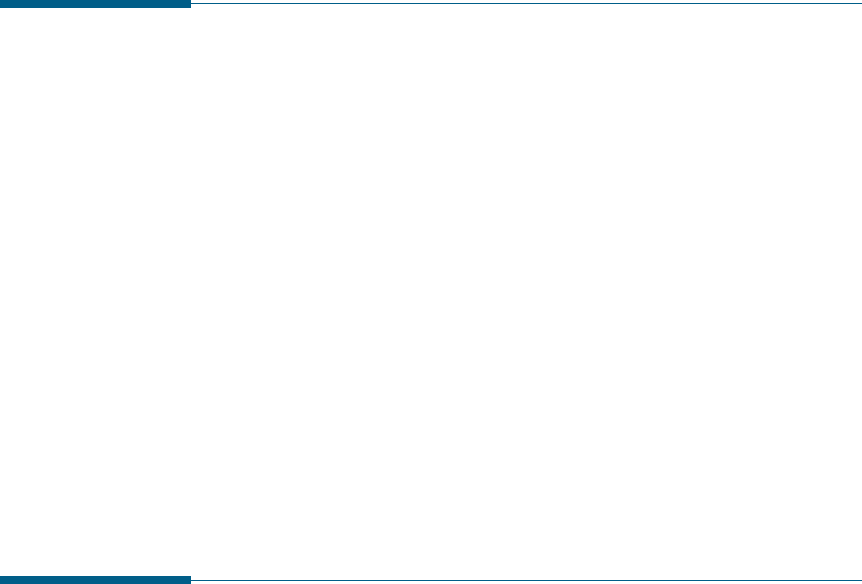
2.16 Stand-alone Fax
Copying Overview
The resolution is automatically set to S.FINE while the copy feature is in
use. However, the contrast can be changed to produce optimal copy
quality for a particular document containing faint markings, dark image,
photographs, or other halftone images.
• Copy quantity : 1 to 99 copies of the document can be made.
• Custom sizing: You can reduce or expand the image size by 1%
increments from 50% to 130%. For MFP model, you can reduce or
expand the image size by 1% increments from 50% to 200%.
• Print order and sorting : When the Collate Copy menu is set to YES,
the machine sorts the print jobs. All pages of the document are printed
in reverse order before the next copy is printed. For example, if you
copy a three-page job to print 2 copies, the machine prints page 3,
page 2, page 1, page 3, page 2, page 1.
Making a Copy
Making a Single Copy
To make a single copy without setting options, take the following steps:
1. Load a document with the print side facing down.
2. Press Copy twice. Your machine starts copying.
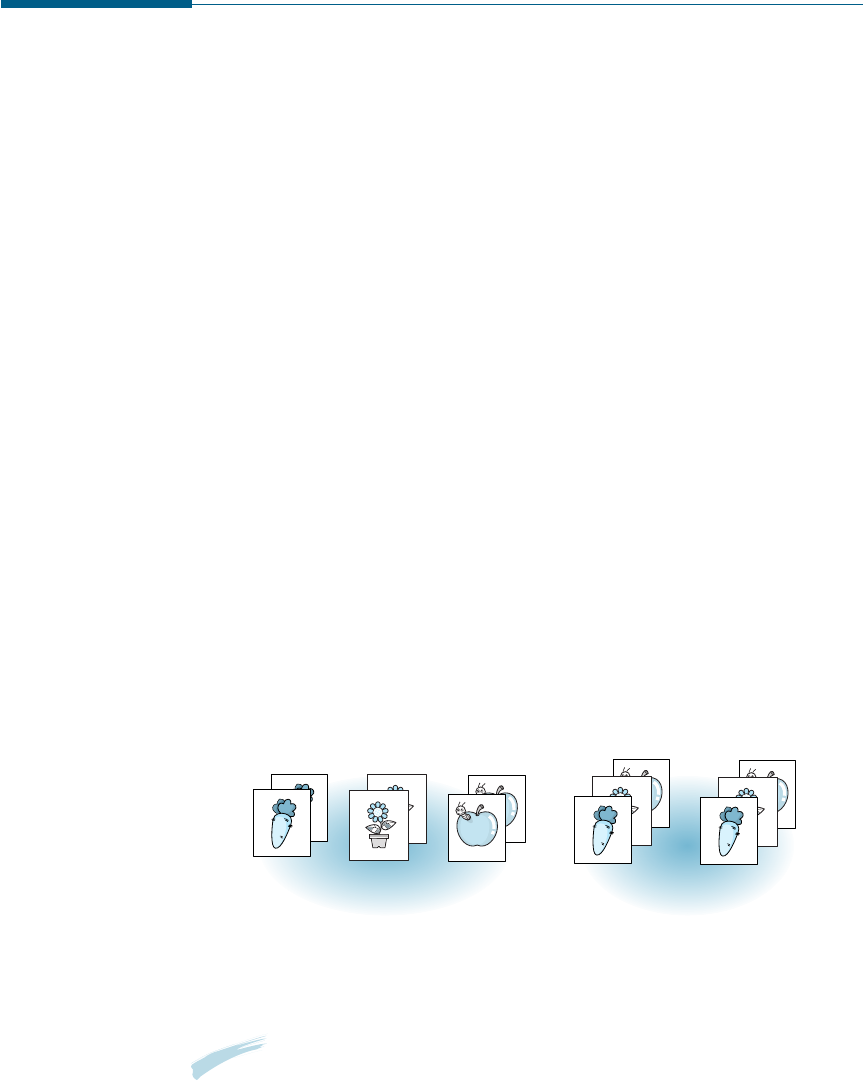
2.17
Stand-alone Fax
Using Advanced Copy Features
You can adjust the quantity, size, and print order for copying. Take the
following steps:
1. Load your document face down with the top edge first going into the
document feeder. If necessary, press Rcv. Mode/Contrast to change
the contrast. For details on the Contrast, see page 2.8.
2. Press Copy . The display asks you to enter the copy quantity
(1 to 99).
3. If you need two or more copies, enter the desired number and press
Start/Enter.
4. If you want to reduce or expand the image size, enter the number of
the desired zoom rate, then press Start/Enter.
5. The display asks you to set the Collate Copy menu. Press ➛☎or ❿to
choose YES or NO. Setting YES will reverse the print order and sort
the print job.
Example: 2 copies of a 3-page document
6. When the desired setting is selected, press Start/Enter or Copy to
begin the copying.
Note: Pressing Copy at any time begins the copy operation immediately
without displaying the remaining options.
3
1
1
2
23
3
2
1
3
2
1
➐☎
➐☎NO ➐☎
➐☎YES
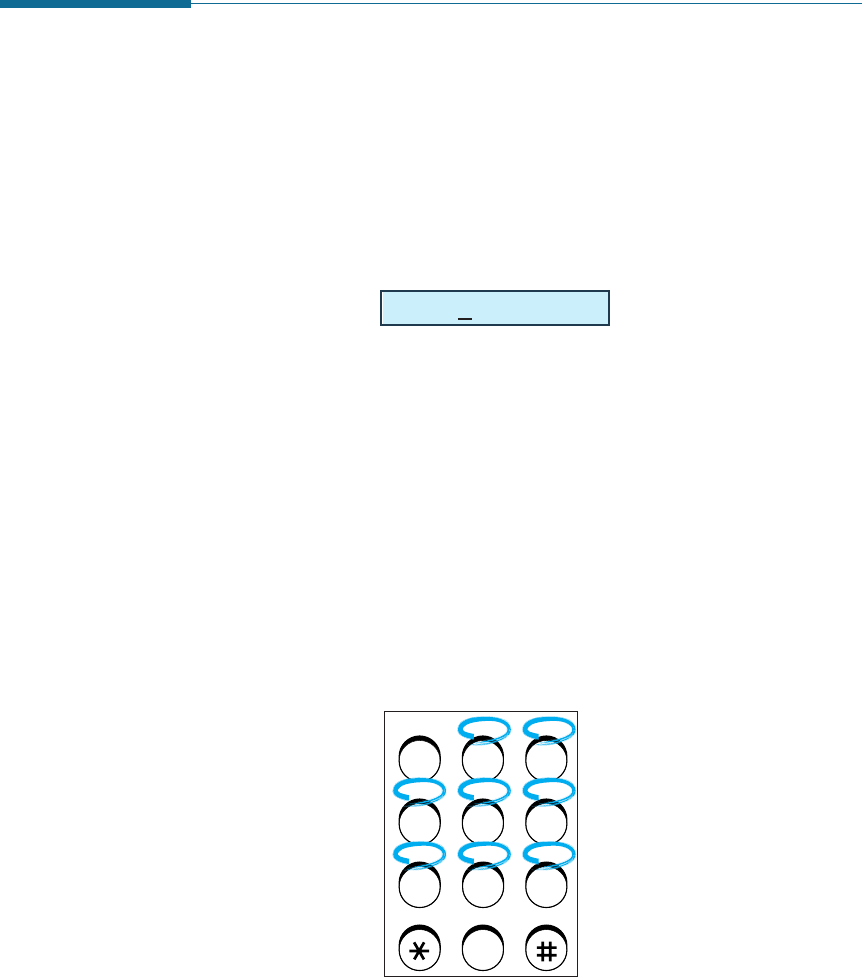
2.18 Stand-alone Fax
How To Enter a Name Using the Number Keys
As you perform various tasks, you will need to enter names and
numbers. For example, when you set up your machine, you have to
enter your name (or your company’s name) and telephone number.
When you store a one-touch dial or speed dial, you also enter the
telephone numbers and names.
When the display asks you to enter a name, the LCD display reads:
Use the procedures described below to enter alphanumeric characters,
special symbols, or spaces.
Entering Alphanumeric Characters
You can also include special symbols in the name by using the 0key.
See `Keypad Character Assignments’ on the next page.
1. Locate the button labelled with the letter you want – then press the
button repeatedly until the correct letter appears in the display.
ABC DEF
O
JKLGHI MNO
TUVPQRS WXYZ
Symbols
123
456
789
0
Automatic Dialling
NAME:
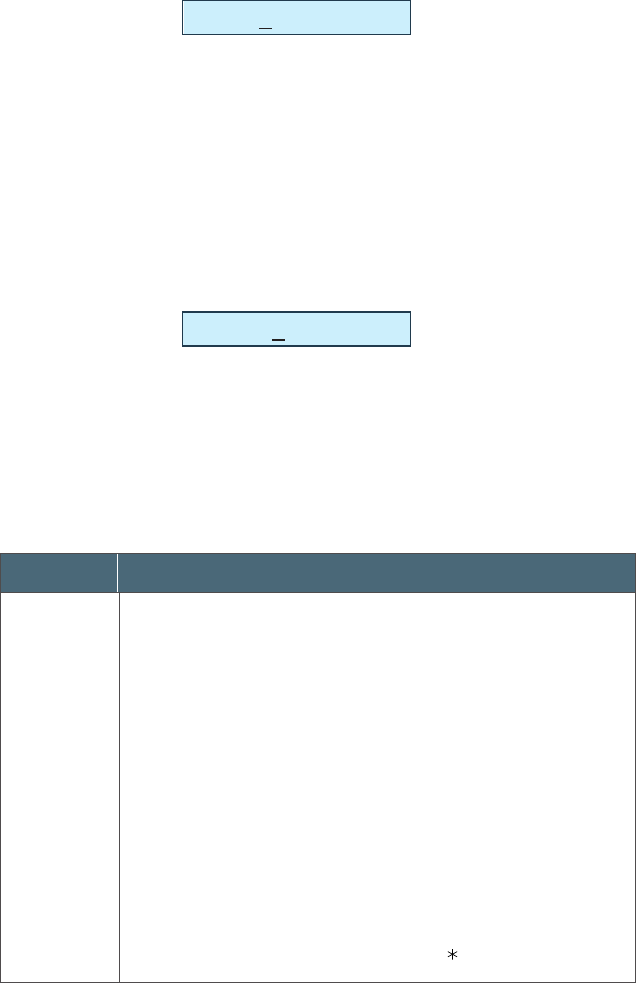
2.19
Stand-alone Fax
For example, to enter an ‘R’, press 7(labelled PQRS). Each time you
press 7, the display shows a different letter–first ‘P’, then ‘Q’, ‘R’, ‘S’,
and finally ‘7.’
The letter appears on the display as shown below.
2. When the letter you want appears on the display, press another
number key labelled with the next letter you want.
If the next letter is printed on the same number button, move the
cursor right by pressing ❿, then press the button.
The blinking cursor moves right and the next letter appears on the
display.
3. Select additional letters in the same way. When you have finished
entering the letters, press Start/Enter.
KEYPAD CHARACTER ASSIGNMENTS
Key
1
2
3
4
5
6
7
8
9
0
Space
➝
1
A
➝
B
➝
C
➝
2
D
➝
E
➝
F
➝
3
G
➝
H
➝
I
➝
4
J
➝
K
➝
L
➝
5
M
➝
N
➝
O
➝
6
P
➝
Q
➝
R
➝
S
➝
7
T
➝
U
➝
V
➝
8
W
➝
X
➝
Y
➝
Z
➝
9
+
➝
-
➝
,
➝
.
➝
‘
➝
/
➝➝
#
➝
&
➝
0
Assigned numbers, letters, or characters
NAME:R
NAME:RP
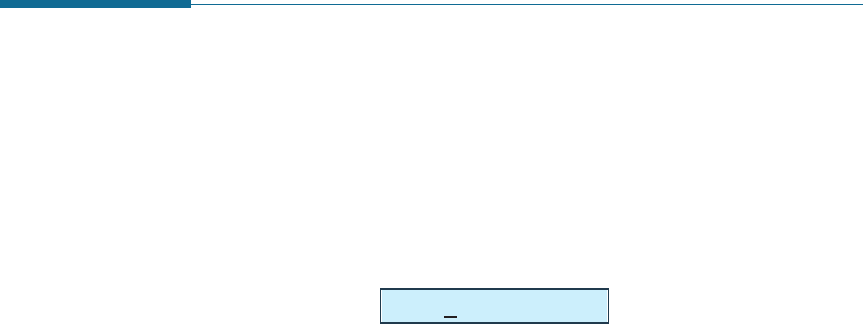
2.20 Stand-alone Fax
One-Touch Dialling
One-Touch dialling lets you use any of the 20 one-touch buttons to
automatically dial a number.
Storing a Number for One-Touch Dialling
1. Press and hold one of 20 one-touch buttons for about 2 seconds. The
display shows `Txx:’, where `xx’ represents the selected one-touch
button number.
If a number has already been stored in the location you chose, the
display shows the number. To edit the number, see the next page.
If you press and hold the button used for group dial number, the
display shows ‘GROUP ASSIGNED’, then asks you to press another
one-touch button.
2. Enter the number you want to store by using the number keypad,
then press Start/Enter.
To insert a pause between numbers, press Pause/Redial; a ‘P’
appears on the display.
If you make a mistake while entering a number, press
Search/Delete and re-enter the correct number.
Editing Name
If you make a mistake while entering a number or name, move the
cursor under the incorrect digit by ➛☎or ❿. Then, press the correct
number to change, or press Search/Delete to delete the number.
Inserting a Pause While Entering a Number
Some telephone systems require an access code (9, for example) and
listen for a second dial tone before dialling an outside number. In such
cases, you must insert a pause in the number when setting up a one-
touch or a speed dial number.
To insert a pause, press Pause/Redial while entering the number.
When you dial a number, the dialling process pauses for a specified time
at the point where you pressed Pause/Redial.
For a longer pause, press Pause/Redial twice.
Txx:_
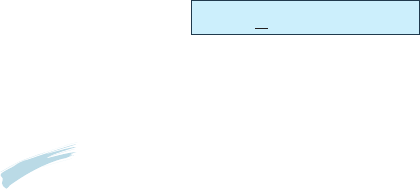
2.21
Stand-alone Fax
3. The display asks you to enter a name. For information on how to
enter names, see page 2.19.
Or, if you do not want to assign a name, skip this step.
4. Press Start/Enter when the name appears correctly or without
entering a name. The display asks you to press another one-touch
number.
5. To set another one-touch number, press the desired one-touch button
and repeat steps 2 through 4.
Or, to return to Standby mode, press Stop.
Editing a Number for One-Touch Dialling
1. Press and hold the one-touch button where the phone number has
been stored.
2. Press ➛☎or ❿to move the cursor to the desired number and edit the
number.
Note: When you press the One-Touch dial number stored for group dial,
the display briefly shows ‘G-REGISTERED’ to indicate that the
number is used for group dial, then you can edit the number.
3. When you have finished editing, press Start/Enter.
Sending a Fax Using a One-Touch Number
1. Load the document face down with the top edge first going into the
document feeder.
2. Press the one-touch button where you stored a number. The number
will be automatically dialled and the document transmitted when the
remote fax machine answers.
T01:025413000
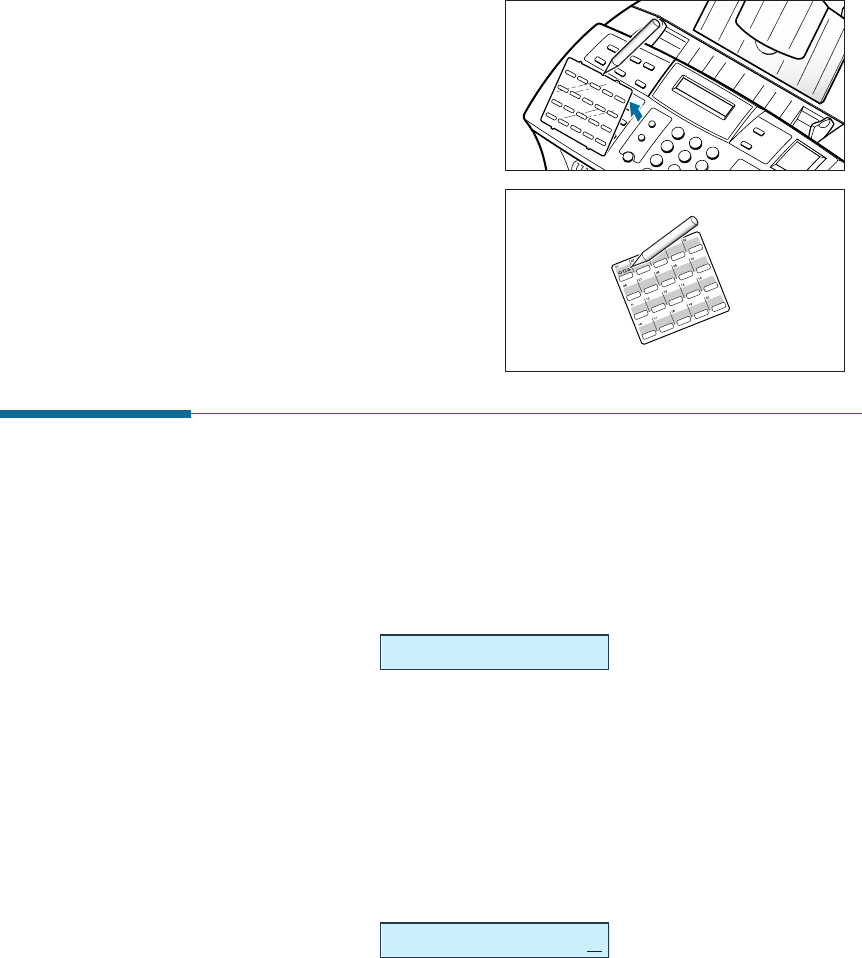
2.22 Stand-alone Fax
Speed Dialling
You can store up to 80 numbers in 2-digit Speed Dial locations (01-80).
Storing a Number for Speed Dialling
1. Press and hold Speed(#) for about 2 seconds.
2. Enter a 2-digit location number (01 through 80) where you want to
store a number, then press Start/Enter.
If a number has already been stored in a location, the display shows
the number. To edit the number, see the next page.
3. Enter the number you want to store, then press Start/Enter.
4. To assign a name to the number, enter the desired name. For
information on how to enter names, see page 2.19.
If you do not want to assign a name, skip this step.
where xx represents the
speed location you have
selected at step 2.
LOC. [01-80]
❿
##
Sxx:05512637522
Using Address Label
A One-touch label sheet is included with your machine. As you store
numbers in one-touch dial buttons, make a note of the numbers on the
label to remind you which number is stored in each position.
1. Remove the clear cover and
label.
2. Write information on the
label and replace the label
and cover.
You may want to use pencil
in case you wish to change
these numbers later.
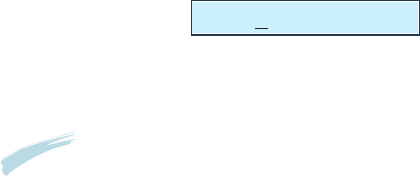
2.23
Stand-alone Fax
5. Press Start/Enter when the name appears correctly or simply
without entering a name. The display asks you to select another
location.
6. To store more speed dial numbers, repeat steps 2 through 5.
Or,
To return to Standby mode, press Stop.
Editing a Number for Speed Dialling
1. Press and hold Speed(#) for 2 seconds.
2. Enter the 2-digit location number where the phone number you want
to edit has been stored, then press Start/Enter. The display shows
the number.
3. Press ➛or ❿to move the cursor to the desired number and edit the
number.
Note: When you press the speed dial number stored for group dial, the
display briefly shows ‘G-REGISTERED’ to indicate that the number is
used for group dial, then you can edit the number.
4. When you have finished editing, press Start/Enter.
Sending a Fax Using a Speed Number
1. Load the document face down with the top edge first going into the
document feeder.
2. Press Speed(#), then enter a 2-digit speed dial location number.
3. Press Start/Enter to dial the number. The number will be
automatically dialled and the document transmitted when the remote
fax machine answers.
Sxx:05512637522
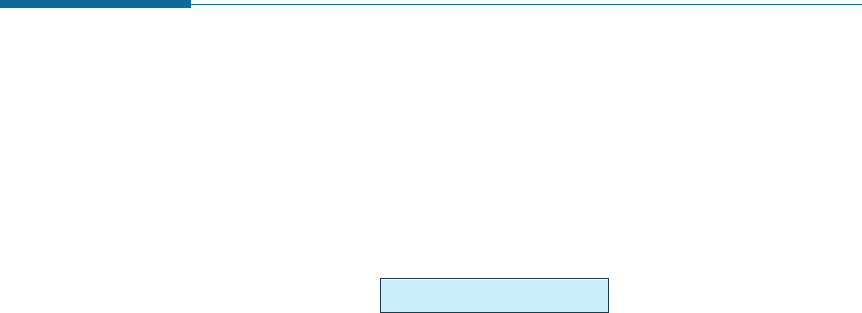
2.24 Stand-alone Fax
Searching for a Number in the Memory
There are two ways to search for a number in the memory. You can
either scan from Ato Zsequentially, or you can search using the first
letter of the name associated with the number.
Searching Sequentially through the Memory
1. Press Search/Delete on the front panel.
2. Press ➛or ❿to scroll through the memory until you find the name
and number you want.
Pressing ➛or ❿allows you to search downward through the entire
memory in alphabetical order (from Ato Z).
While searching through the machine’s memory, you will see that each
entry is preceded by one of three letters: ‘T’ for one-touch dial, ‘S’ for
speed, or ‘G’ for group dial number. These letters tell you how the
number is stored.
3. When the name and number you want appears on the display, press
Start/Enter to dial.
If a document is loaded, the document begins to be transmitted when
the remote fax machine answers the phone.
Searching with a Particular First Letter
1. Press Search/Delete, then press the button labelled with the letter
you want to search for. A name beginning with the letter appears on
the display.
For example, if you want to find the name ‘MOBILE,’ press the ‘6’
button, which is labelled with ‘MNO.’
2. Press ➛or ❿to display the next name in the list.
3. When the name and number you want appear, press Start/Enter to
dial.
PRESS ➛, ❿, A-Z

2.25
Stand-alone Fax
Transmission
Options
Broadcasting
This feature will allow documents to be sent to multiple locations. After
sending, the documents are erased from the memory.
1. Load your document face down with the top edge first going into the
document feeder. And adjust the resolution and contrast, if necessary.
For details, see page 2.8.
2. Press Trans. Option on the front panel. The display shows the first
menu; BROADCASTING.
3. Press Start/Enter to access the Broadcasting menu.
4. Enter the number of the remote machine using the number keypad.
You can also press a one-touch button including group dial buttons. If
not, press Speed(#), enter a 2-digit speed dial number, then press
Start/Enter. The stored number appears on the display.
5. Press Start/Enter to confirm the number. The display asks you to
enter another fax number.
6. If you want to send to more than one location, repeat steps 4 and 5.
Note: You cannot use Group dial numbers for another fax number.
Or,
To send to one location or when you complete the last fax number
setting, press Start/Enter.
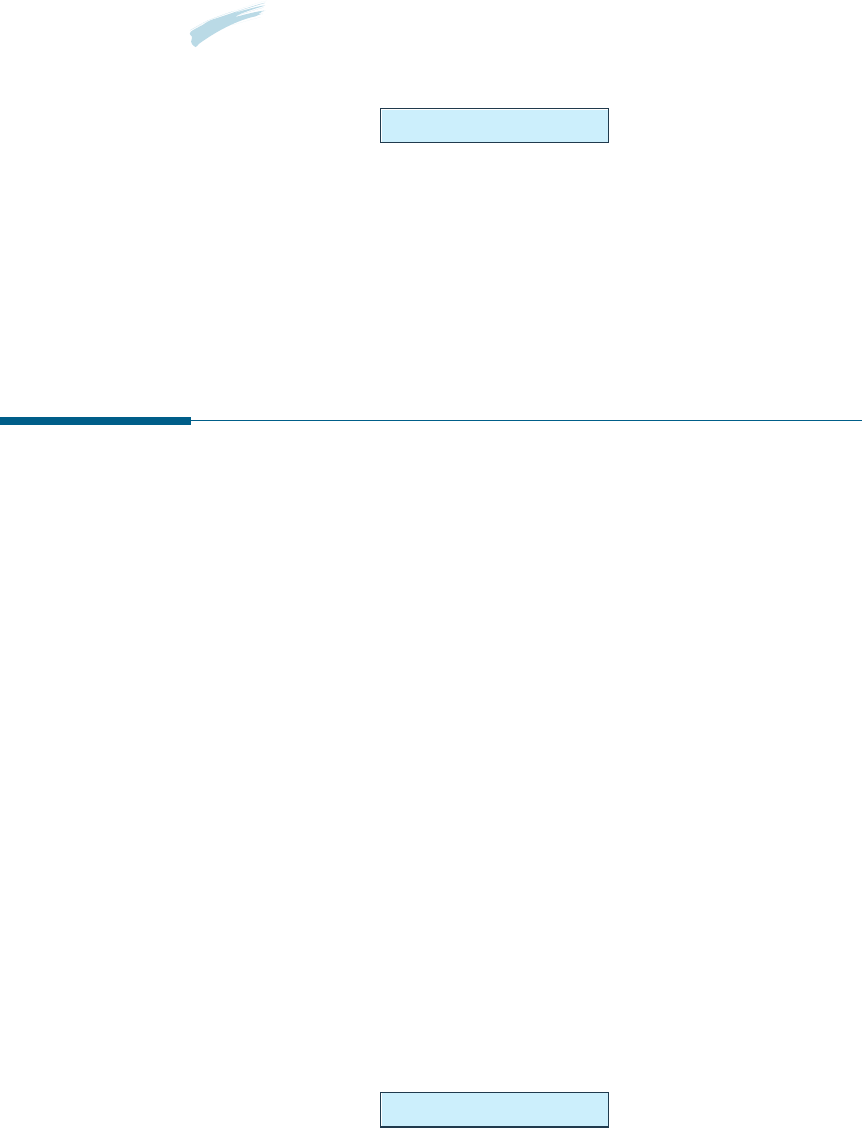
2.26 Stand-alone Fax
Delayed Fax
This machine can be set to send a fax at a future time.
1. Load your document face down with the top edge first going into the
document feeder. And adjust Resolution and Contrast, if necessary.
For details, see page 2.8.
2. Press Trans. Option on the front panel. The display shows the first
menu; BROADCASTING.
3. Press ➛or ❿until ‘DELAYED FAX’ appears, and press Start/Enter to
access the Delayed FAX menu.
4. Enter the number of the remote machine using the ten number
keypad.
You can also press a one-touch button including group dial buttons. If
not, press Speed(#), enter a 2-digit speed dial number, then press
Start/Enter. The stored number appears on the display.
5. Press Start/Enter to confirm the number. The display asks if you
want to enter another fax number.
7. The document will be scanned into memory. The display shows the
memory capacity and the number of pages being stored. The machine
begins sending the documents in order of the numbers you entered.
Notes:
• If ‘MEMORY FULL’ occurs while scanning into the memory, the display
will show:
Press ➛☎or ❿to select the option you want. If you select Cancel,
broadcasting is cancelled. If you select Done, your machine performs
broadcasting only with the pages already scanned.
• If an error occurs while sending to a specific number, the machine
transmits the document to all the other numbers, then retries the number
that previously recorded an error. After completing transmission, your
machine prints the multi-communication report.
ENTER ANOTHER NO
JOB❿CANCEL❿DONE

2.27
Stand-alone Fax
6. If you want to send to more than one location, repeat steps 4 and
5.
Note: You cannot use Group dial numbers for another fax number.
Or,
To send to one location or when you complete the last fax number
setting, press Start/Enter.
7. The display asks you to enter a name. If you want to assign a
name to the transmission, enter the name. If not, skip this step.
For details on how to enter the name using the number keypad, see
page 2.19.
8. Press Start/Enter. The display shows the current time and asks
you to enter the time when the fax is to be sent.
9. Enter the time by using the number keypad, then press
Start/Enter.
Enter the time in 24-hour format. For example, enter 2230 for
10:30 P.M. If you set a time earlier than the current time, the
document will be sent at that time on the following day.
10. The document will be scanned into memory. The display shows the
memory capacity and the number of pages being stored.
11. The machine returns to Standby mode and the display alternates
between messages to remind that you are in Standby mode and
that a Delayed Transmission is set.
Note: To cancel the operation reserved in memory, see ‘Cancelling a
Scheduled Operation’ on page 2.31.
TIME(10:30)10:30
The current time

2.28 Stand-alone Fax
Priority Fax
When the priority fax is enabled, a high priority document can be
transmitted ahead of reserved operations. The document is scanned into
the memory, then transmitted when the current operation is concluded.
In addition, a priority transmission will interrupt a broadcast operation
between stations (i.e., when transmission to station A ends, before
transmission to station B begins) or between redial attempts.
1. Load the document face down. If necessary, adjust Resolution, or
Contrast. For details, see page 2.8.
2. Press Trans. Option on the control panel. The display shows the first
menu; BROADCASTING.
3. Press ➛or ❿until ‘PRIORITY FAX’ appears, then press Start/Enter
to access the Priority Fax menu.
4. Enter the number of the remote machine using the ten number
keypad.
You can also press a one-touch button. If not, press Speed(#), enter
a 2-digit speed dial number, then press Start/Enter. The stored
number appears on the display.
5. Press Start/Enter to confirm the number. The display asks you to
enter a name.
6. If you want to assign a name to the transmission, enter the name.
If not, skip over this step.
For details on how to enter a name using the number keypad,
see page 2.19.
7. Press Start/Enter. The document will be scanned into memory. The
display shows the memory capacity and the number of pages being
stored.
8. The machine shows the number being dialled, then begins sending the
document.

2.29
Stand-alone Fax
POLLCODE [0000]
BULLETIN
❿
YES
❿
NO
5. To use a poll code, enter the 4-digit code (except for 0000), then
press Start/Enter. Or,
If you do not want to secure the transmission with a poll code, press
Start/Enter when the display shows 0000 for the poll code, or press
0000.
6. The display asks you to store the document in the machine’s bulletin
memory.
Polling
What is Polling?
Polling is used when one fax machine requests another to send a
document. This is useful when the person with the original document is
not in the office. The person to receive the document calls the machine
holding the original and requests that the document be sent. In other
words, it “polls” the machine holding the original.
Polling Transmission
You can program the fax machine to send documents in your absence
when polled by a remote fax machine. A polling code is used to prevent
unauthorized polling of your machine. When you secure your machine in
this manner, only those who know the poll code can poll your machine.
Note: Polling Transmission only works with machines of the same model
that have the Polling Reception feature.
1. Load your document face down with the top edge first going into the
document feeder, and adjust the resolution and contrast. For details,
see page 3.8.
2. Press Trans. Option on the front panel. The display shows the first
menu; BROADCASTING.
3. Press ➛or ❿until ‘SEND POLLING’ appears, and press Start/Enter
to access the Send Polling menu.
4. The display asks you to enter a 4-digit poll code. The poll code is
preset to 0000 at the factory which represents no poll code.

2.30 Stand-alone Fax
7. Press ➛or ❿to highlight YES or NO, then press Start/Enter.
If you want to store the document in the bulletin board memory,
select YES. More than one remote station can poll that document from
your machine.
If not, the document will be automatically erased after being polled by
a remote machine.
8. The machine stores the document in memory. The display counts the
number of pages being stored in memory and the memory capacity
remaining.
The machine returns to Standby mode and the display shows a
reminder that a Polling Transmission is set. The machine automatically
switches to FAX mode (automatic receiving) when set to be polled.
Polling Reception
You can set your machine to automatically receive documents from
one or more unattended remote fax machines. This feature permits
unattended polling in the evening hours when telephone rates are lower.
Note: The remote machine must be ready for polling.
1. Press On Hook Dial and when you hear a dial tone, call the remote
fax machine.
2. When you hear the fax tone, press Trans. Option. Then, ‘RECEIVE
POLLING?’ appears.
3. Press Start/Enter. The display asks you for a 4-digit code. Poll code
‘0000’ represents no code.
4. If the remote machine is secured with a poll code, you must enter
the correct code, and press Start/Enter. Or,
If the remote machine is not secured with a poll code, press
Start/Enter to accept [0000] which represents no code.
5. The machine begins to receive polling.
Notes:
• To cancel the operation, press Stop at any time.
• Not all fax machines have polling capability, and polling incompatibility
can occur between different manufacturers.
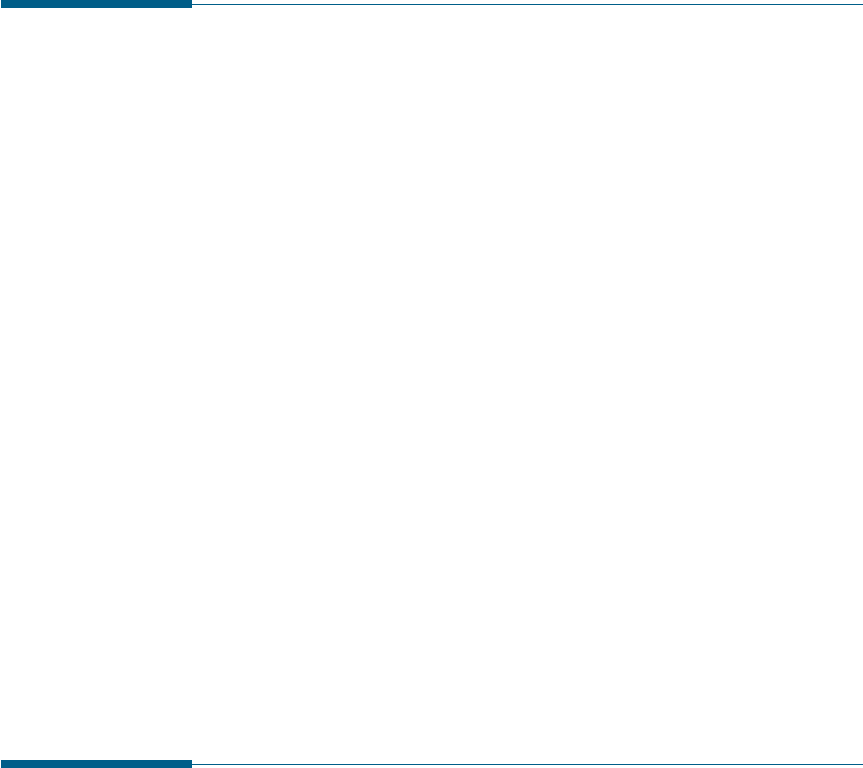
2.31
Stand-alone Fax
Adding Documents To a Scheduled Operation
You can add documents to the delayed transmission previously reserved
in memory.
1. Load the document face down, and adjust Resolution, or Contrast, if
necessary. For details, see page 2.8.
2. Press Trans. Option on the front panel. The display shows the first
menu; BROADCASTING.
3. Press ➛or ❿until ‘ADD SCHEDULE’ appears, and press Start/Enter.
The display shows the operation, time and name currently reserved in
memory.
4. Press ➛or ❿repeatedly until you find the operation to which you
want to add documents, then press Start/Enter.
The machine automatically and stores the documents in memory, and
the display shows the memory capacity and the number of pages.
5. After storing, the machine displays the total number of pages, then
returns to Standby mode.
Cancelling a Scheduled Operation
1. Press Trans. Option on the front panel. The display shows the first
menu; BROADCASTING.
2. Press ➛or ❿until ‘CANCEL SCHEDULE’ appears, and press
Start/Enter. The display shows the operation, time and number
currently reserved in the memory.
3. Press ➛or ❿repeatedly until you find the operation you want to
cancel, then press Start/Enter. The display asks you to confirm your
selection.
4. Press Start/Enter to cancel the selected operation. The operation is
deleted from memory.
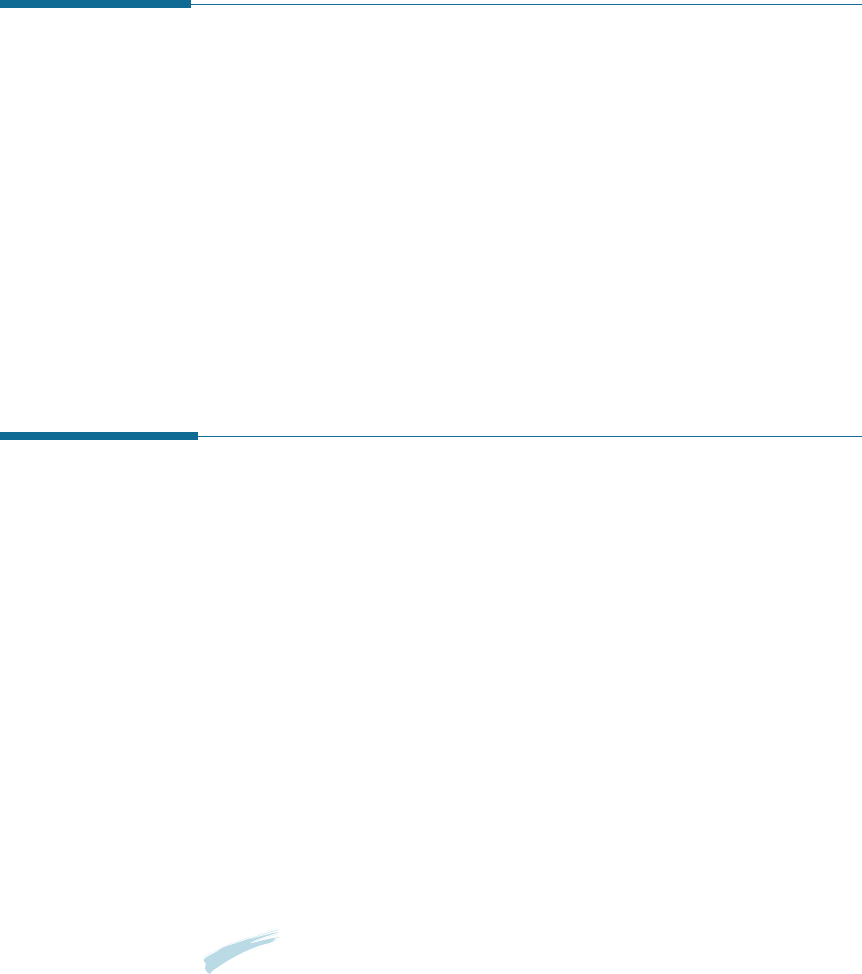
2.32 Stand-alone Fax
Additional Functions
Monitoring a Dual Job Status
Your machine can perform more than one of many functions
simultaneously. For example, you can;
• Receive a fax into the memory while making a copy.
• Store a fax document for later transmission while printing an incoming
fax.
When the machine performs dual tasks, press Status to see the current
status on the display of the other operation. Each time you press
Status, the current status of the two operations displays alternatively.
Forwarding Received Faxes
You can forward all faxes which you receive during the specified period to
a specified remote station. This can be useful when you are out of your
work station and want to receive your faxes through another station.
Setting Time and Destination for Forwarding Faxes
To forward the received fax, you must define the remote fax machine
where the fax is to be sent and the start time and end time of a period
when the Fax Forward feature operates.
1. Press and hold down Fax Forward for about 2 seconds on front panel.
2. Enter the number of a designated fax machine to where the faxes are
delivered using the ten number keypad.
You can also use one of one-touch dial button or a speed dial number.
Note: You cannot use the Group dial number for forwarding a fax.

2.33
Stand-alone Fax
3. When the correct number displays, press Start/Enter.
The displays prompts you to enter the start time.
4. Enter the date and time when the Fax Forwarding feature starts to
operate and press Start/Enter.
The displays prompts you to enter the end time.
5. Enter the date and time when the Fax Forwarding feature ends and
press Start/Enter.
Turning the Fax Forwarding Feature On or Off
Press Fax Forward on front panel to turn this feature on or off.
• If the LED is on, Fax Forwarding activates. All faxes delivered to your
machine during the specified period will be automatically forwarded to a
registered station.
• If the LED is off, Fax Forwarding deactivates.
Notes:
• If an error occurs during forwarding a fax, your machine will
automatically redial the number every three minutes up to a maximum of
two times, just like normal fax operation.
• The Sending Confirmation report showing time when faxes are
forwarded, the designated fax number, the transmission result, the
contents of the fax and so on will automatically print right before the end
time.
Printing Reports
You can print help and reports containing useful information.
Notes: The list you have set to print out automatically will not print out
when there is no paper loaded or a paper jam has occurred.
Help
Shows the machine’s basic functions and commands and can be used as
a quick reference guide.
Sent Journal
Shows information concerning fax transmission activities recently made.
Received Journal
Shows information concerning fax reception activities recently made.

2.34 Stand-alone Fax
Phonebook
Lists all numbers currently stored in memory as One-touch dial numbers,
Speed dial numbers, and Group dial numbers.
Sending Confirmation
Shows the fax number, the number of pages, elapsed time of the
operation, the communication mode, and the communication results.
You can print the confirmation report in one of the following ways
according to your setting in System Setup(see page 3.2):
• Automatically after each transmission (ON)
• Automatically only if an error occurs during transmission (ERROR)
• No report printed at all (OFF). You can print this report manually.
Schedule Information
Shows the document currently stored for Delayed transmission, Priority
transmission, Broadcasting and Send polling. The list shows the starting
time, type of operation, etc.
System Data List
Shows the status of the user-selectable options. After you change any
setting, print this list to confirm your changes.
Multi-Communication Report
Is printed automatically after sending documents to or receiving
documents from more than one location.
Callback Message
Is printed out automatically when you do not respond to a remote
operator’s Voice Request.
Power Failure Report
Is printed out automatically when power is restored after a power failure.
This report shows data erased by the power failure.
TO PRINT LISTS
1. Press Report/Help on the front panel. The display shows the first
menu.
2. Press ➛or ❿until you find the list you want to print, then press
Start/Enter. The selected list will be printed.
HELP
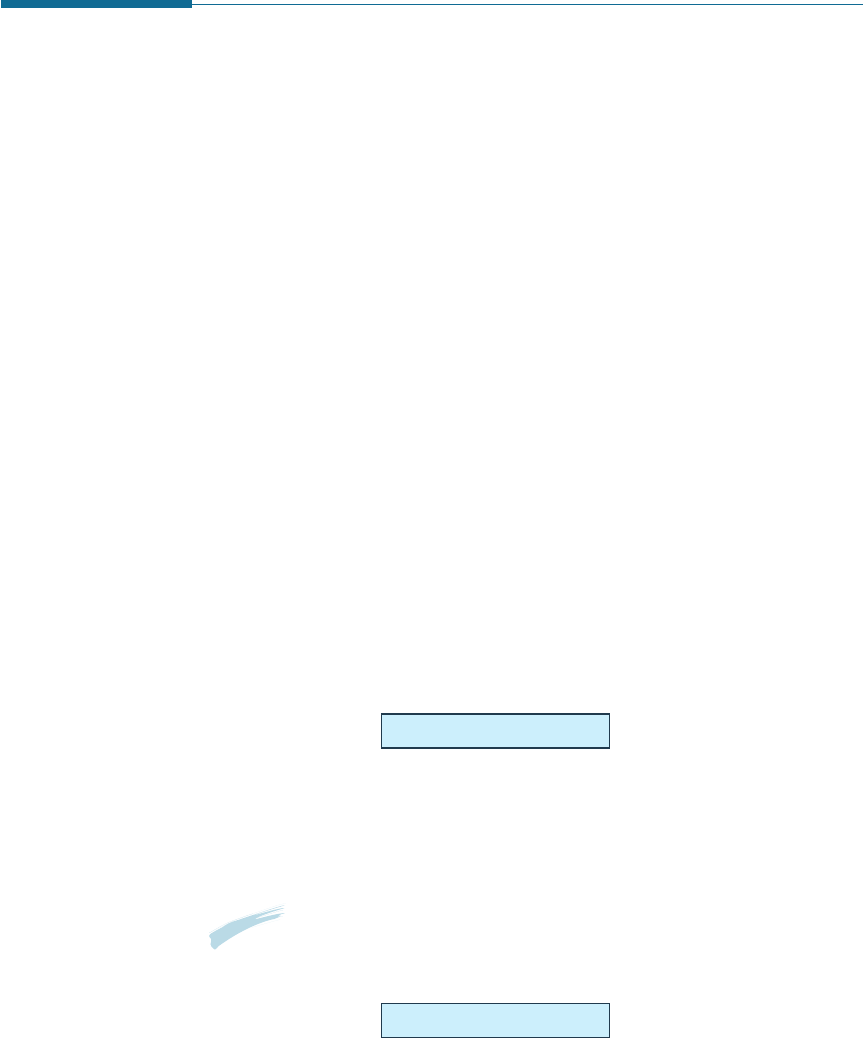
2.35
Stand-alone Fax
Group Dialling (for Multi-Address Transmission)
Multiple one-touch and speed dial numbers can be registered as a group.
By using the group number, you can send a document to multiple parties
in a single operation. The machine will dial the remote numbers in stored
sequence. If the number is busy, the machine will dial the next stored
number. After dialing all of the stored numbers, the unit will
automatically redial any number that was busy. Before you can use this
feature, you must program the group numbers desired.
Storing One-Touch or Speed Dial Numbers for Group
Dialing
1. Press User Tools on the front panel.
The display shows the first menu; FAX NUMBER/NAME.
2. Press ➛or ❿until ‘GROUP DIAL SETUP’ appears, and press
Start/Enter.
3. Press one of the 20 one-touch buttons that you want to use for group
dial.
4. The display asks you to confirm that you use this button for group
dialing.
Press Start/Enter to confirm.
If you do not want to use the one-touch number, press Stop.
Then,press another one-touch button.
Note: If the button you chose has already been used for one-touch
dialing , the display warns the one-touch number is used.
Then you are allowed to select ‘OTHER’ or ‘RENEW’ by pressing
➛or ❿. To replace that number and continue, select RENEW
and to start over with a different location, select OTHER. When the
desired option is displayed, press Start/Enter.
GROUP NO.: T15
T15 USED !

2.36 Stand-alone Fax
5. The display asks you to press a one-touch button or to enter a 2-digit
speed dial number that you wish to include in the group.
6. Press a one-touch button where the fax number you wish to include in
the group is stored.
Or,
Enter a 2-digit speed dial location where the fax number you wish to
include in the group is stored.
7. Press Start/Enter. The display shows the fax number which was
stored in the selected location.
8. Repeat step 6 to 7 to enter additional numbers into the selected
group.
9. Press Start/Enter when you have entered all the desired
destinations. The display asks you to enter a name.
10. To assign a name to the group, enter the desired name. See page
2.19 for entering letters.
Or,
If you do not want to assign a name, skip this procedure.
11. Press Start/Enter. The display asks you to select a one-touch
number for another group dial.
12. To continue storing, press the wanted one-touch button and repeat
steps 4 through 11.
13. To stop storing, press Stop. The display returns to Standby mode.
Note: You cannot include one group dial number in another group dial
number.
2.37
Stand-alone Fax
Editing Group Dial Numbers
You can edit one-touch or speed dial numbers stored for group dialling.
1. Press User Tools on the control panel.
The display shows the first menu; FAX NAME/NUMBER.
2. Press ➛☎or ❿until you find ‘GROUP DIAL SETUP’, then press
Start/Enter.
3. Press the one-touch group dial button used for the group dial
number you want to edit.
4. Press ➛☎or ❿to select the option you want, then press Start/Enter.
Select MEMBER ADD to add a number, and enter as many numbers
as needed. To stop entering numbers, press Start/Enter. Note that
you cannot include one group number in another group dial number.
Select MEMBER DELETE to delete a number. When the number that
you want to delete is displayed, press Start/Enter.
5. When you are finished editing, press Stop.
Sending a Fax Using Group Dialing
(Multi-Address Transmission)
You can use Group Dialling for the Delayed Transmission or Memory
Transmission.
Follow the procedure of the desired operation (Broadcasting transmission
- p.2.25, Delayed transmission - p.2.26). When the display requests you
to enter the remote fax number, press the one-touch button where you
stored the group number. You can use only one group number for each
operation. Continue the procedure to complete the desired operation.
The machine automatically scans the document into memory and dials
each of the numbers included in the group.
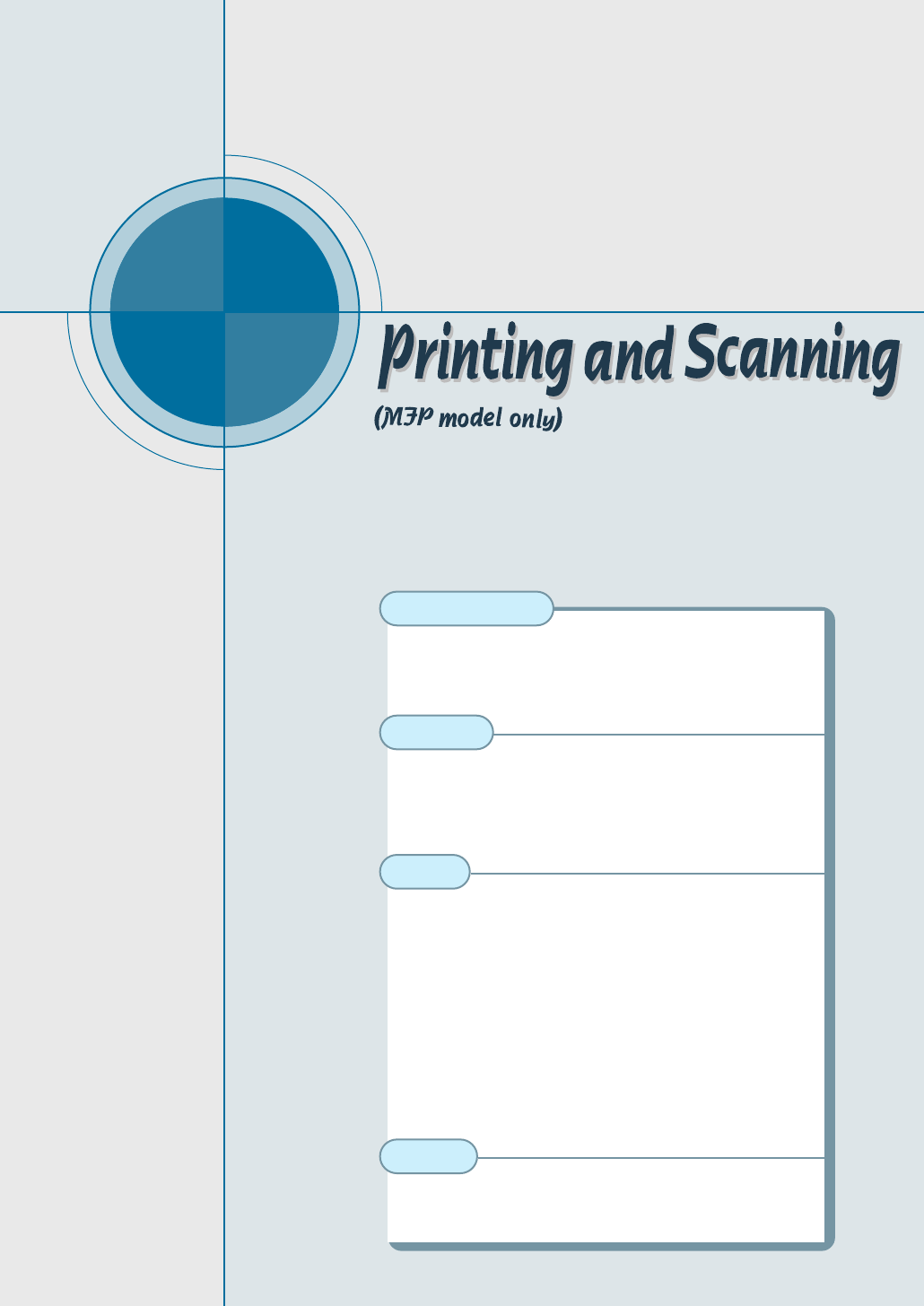
chapter
3
3
You MUST install the Printer Driver Type 1100 and the Twain
Scanner Driver Type 1100 to use your machine as a printer and
scanner.
Read this chapter to learn how to select and load print media
and how to use the print settings.
The topics included in this chapter are:
Print Media
◆ Selecting Print Media
◆ Using the Automatic Paper Input Tray
◆ Using the Manual Paper Input Tray
◆ Specialty Paper Guidelines
Scanning
◆ Scanning from a Windows Application
◆ Type1100 TWAIN for scan Window
Installing Software
◆ System Requirements
◆ Installing the Software
◆ Uninstalling the Software
Printing
◆ Printing a Document
◆ Cancelling a Print Job
◆ Printing Help
◆ Printing Several Pages Per Sheet
◆ Scaling Your Document
◆ Fitting Your Document to a Selected Paper Size
◆ Printing Posters
◆ Printing Watermarks
◆ Using Page Overlays
◆ Printing in a Network Environment
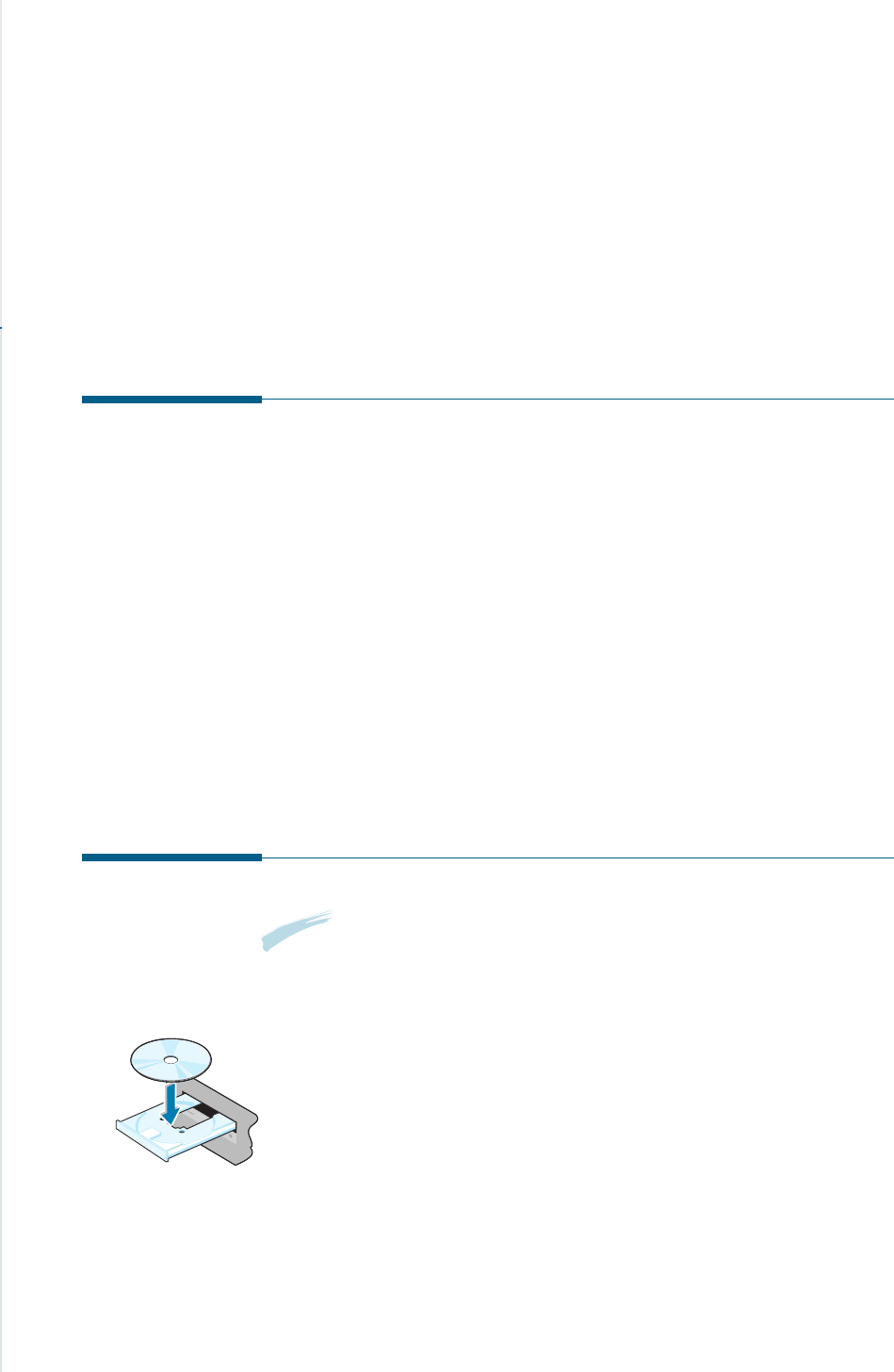
3.1
Printing and Scanning
System Requirements
Before you begin, ensure you have the following computer setup:
Minimal requirements:
• Operating systems: Windows 95 OSR2/Windows 98/Windows 98
SE/Windows Me/Windows NT 4 Workstation or
Server with Service Pack 3/Windows 2000
• Disk space: 120 MB for installation
• Memory: 32 MB
• CPU: Pentium 133
Installing Software
Installing the Software
Note: For Windows 95/98 users, close “New Hardware Found” screen
when the computer boots up.
1. Insert the supplied CD-ROM into your CD-ROM drive.
The CD-ROM is automatically running and the opening window
appears.
If the opening window does not appear, click Start, and then Run.
Type X:Setup.exe, replacing “X” with the letter of your drive, and
click OK.
S
A
M
S
U
N
G
S
F
-
5
3
0
S
e
r
i
e
s
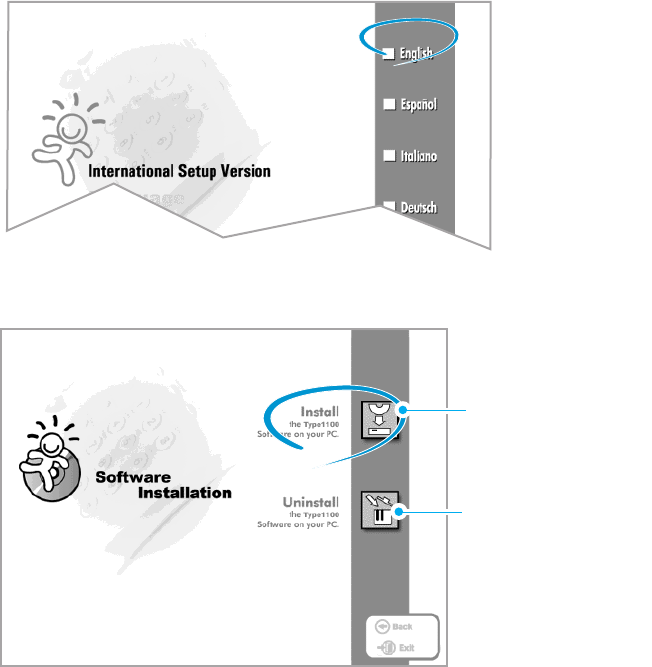
3.2 Printing and Scanning
2. When the opening screen appears, click the language you want to
use.
3. Click Install the Software on your PC.
Uninstalls the Software.
Installs the Software on
your PC.
4. When the installation is completed, The message box recommends
you restart your computer. Click Finish, then Windows restarts.
If your computer does not shut down and restart automatically, you
must shut it down manually and restart for the changes to saved.
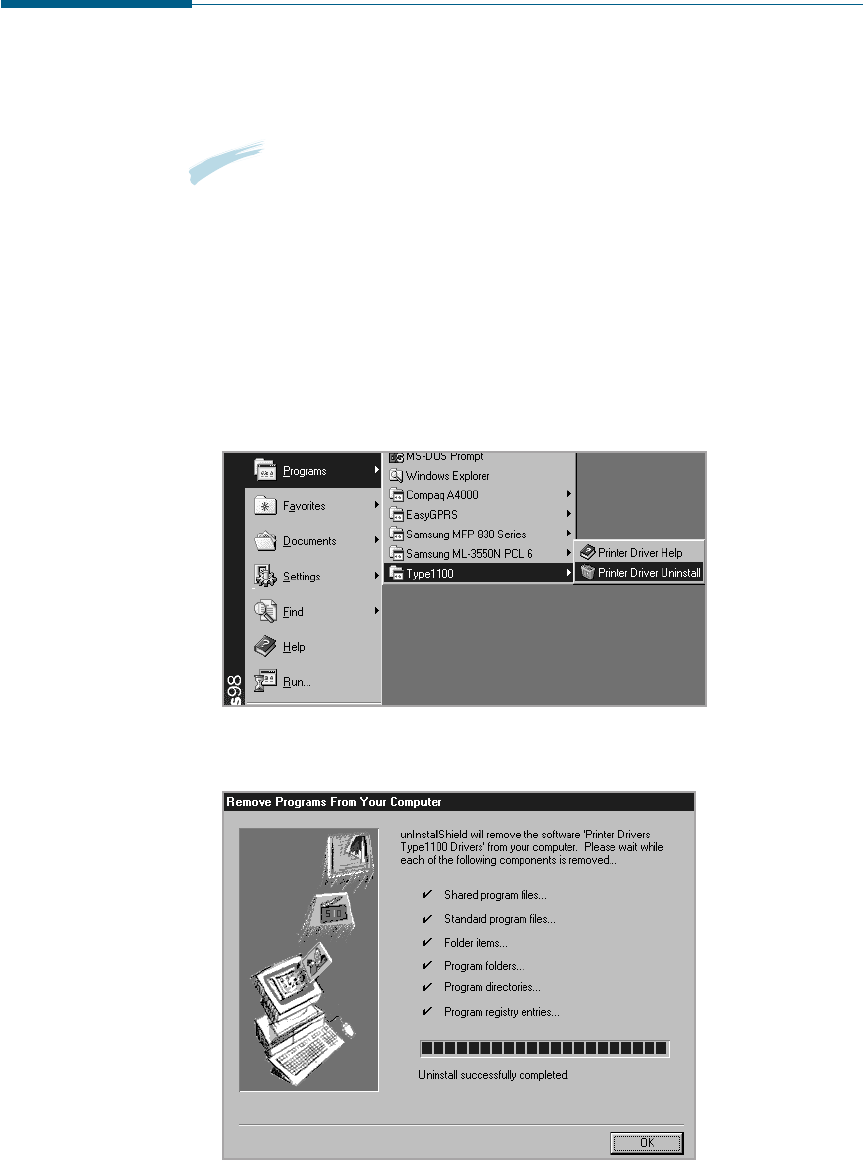
3.3
Printing and Scanning
Uninstalling the Software
Un-installing is required if you are upgrading the software or if your
installation fails.
Note: Before beginning un-installation, ensure all applications are closed
on your PC. A system reboot is required after the software is un-
installed.
Un-installing the MFP Driver
1. Start Windows if not already started.
2. From the Start menu, select Programs, then select the software you
want to uninstall, then select Printer Driver Uninstall.
3. When your computer confirms your selection, click Yes. The printer
driver and all its components are removed from your computer.
4. When un-installation is done, click OK.
5. The message box recommends you restart your computer.
Click OK, then restart Windows.
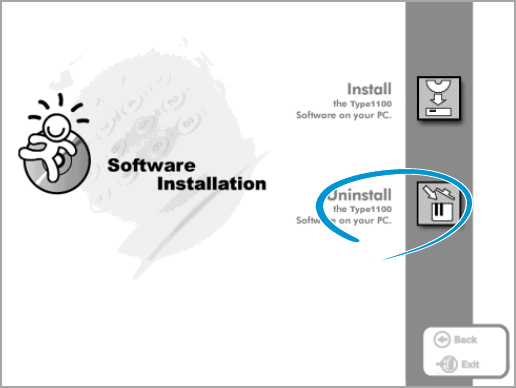
3.4 Printing and Scanning
Using the CD-ROM
You can un-install both the MFP driver and the software with the CD-
ROM you have used to install the software.
1. Insert the CD-ROM into your CD-ROM drive.
The CD-ROM is automatically running and the opening window
appears. (If the opening window does not appear, select Run from the
Start menu, then type X:SETUP, replacing “X” with the letter of your
drive and click OK.
2. When the opening window appears, click the language you want to
use.
3. Click Uninstall the software on your PC.
4. Follow the on-screen instructions to complete un-installation.
You must shut down and restart your computer before changes you
have made will be in effect.

3.5
Printing and Scanning
Selecting Print Media
The type of media you select affects the performance and print quality.
Selecting Media Types
Most photocopy paper, postcards, index cards, transparencies, envelopes,
and labels will work your printer, particularly paper that is marked for
use in laser printers. For the best results, use one of the papers
developed especially for an laser printer.
What to Consider
• Desired outcome. The paper you choose should be appropriate for
the project. For example, use greeting card paper when making party
invitations.
• Size. Choose any size paper that fits easily within the paper adjusters
of the printer.
• Weight. Use 20~24-pound or 75~90 g/m2 plain paper for
multipurpose, everyday use.
• Brightness. Some papers are whiter than others and produce sharper,
more vibrant colors. Use premium photo paper for documents with
photographs. Use white paper for documents with any other pictures.
• Surface smoothness. The smoothness of the paper affects how crisp
the printing looks on the paper. Glossy, coated paper works well for
pictures and charts where you want crisp lines.
Get the Right Paper
Your machine is designed to work well on most common office paper
types and with quality 25% cotton bond paper. Because your printer
uses toner to produce an image, paper that accepts toner produces the
best results. Be sure to test a variety of paper types before buying large
quantities.
Print Media

3.6 Printing and Scanning
Paper that Might Not Work
• Highly textured stock, such as linen, may not print evenly because the
toner can bleed.
• Extremely smooth, shiny, or coated papers not specifically designed for
laser printers can jam the printer and repel toner.
• Multi-part forms, such as duplicate or triplicate forms can wrinkle and
jam; the toner is also more likely to smear.
• Paper in poor condition — with tears, dust, wrinkles, curled or bent
edges, or that doesn’t lie flat can jam the printer.
• Envelopes with thick or crooked edges; envelopes that are damaged,
curled, wrinkled, or irregularly shaped; envelopes that are shiny or
embossed; or envelopes with clasps or windows.
Selecting Media Sizes
The paper input tray can hold up to 150 sheets of 20 Ib (75 g/m2)
paper. The single-sheet manual input tray is designed to hold one sheet.
Both can be adjusted to hold media measuring from 3.87 by 6.38
inches (98.5 by 162 mm) to 8.5 by 14 inches (216 by 356 mm). This
includes, but is not limited to, the following paper and envelope sizes:
•A4: 8.25 by 11.75 in; 210 by 297 mm
•A5: 5.82 by 8.25 in; 148 by 210 mm
•B5: 7.16 by 10.12 in.; 182 by 257 mm
•Letter: 8.5 by 11 in; 216 by 279 mm
•Folio: 8.5 by 13 in; 216 by 330 mm
•Legal: 8.5 by 14 in; 216 by 356 mm
•Executive: 7.25 by 10.5 in; 184 by 267 mm
•No.10 Envelopes: 4.12 by 9.5 in; 105 by 241 mm
•DL. Envelopes: 4.33 by 8.66 in.; 110 by 220 mm
•C5 Envelopes: 6.38 by 9.01 in.; 162 by 229 mm
•C6 Envelopes: 4.49 by 6.38 in.; 114 by 162 mm
•B5 Envelopes: 6.93 by 9.84 in.; 176 by 250 mm
•Monarch Envelopes: 3.87 by 7.5 in; 98.5 by 190.5 mm
Note: Insert all media vertically (portrait orientation) into the paper input
tray or single-sheet manual input tray. To print horizontally (landscape
orientation), make this selection through software. Do not print on
paper smaller than 3.87 by 6.38 inches (98.5 by 162 mm).
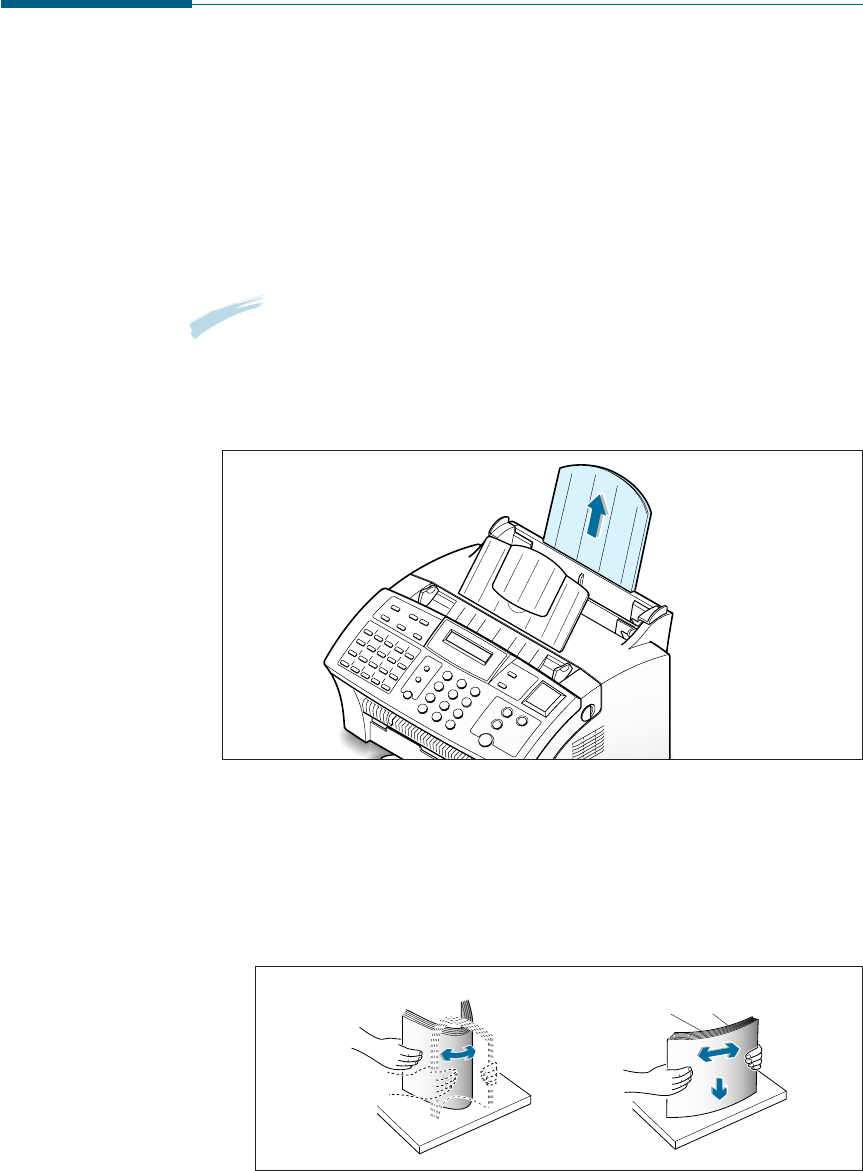
3.7
Printing and Scanning
Using the Automatic Paper Input Tray
You can stack paper or transparencies in the automatic paper tray to
feed automatically. The automatic tray can hold a maximum of 150
sheets of plain paper. The maximum capacity may be reduced depending
on the thickness.
For best results, adjust the paper settings each time you change paper
(see page 3.13).
Note: If you experience feeding problems, try printing one at a time from
the manual input tray. See page 3.9.
1. Pull the paper input support completely out of the unit.
2. Prepare the print material for loading.
• For paper:
- Flex or fan the paper back and forth. Do not fold or crease the
paper. Straighten the edges on a level surface.
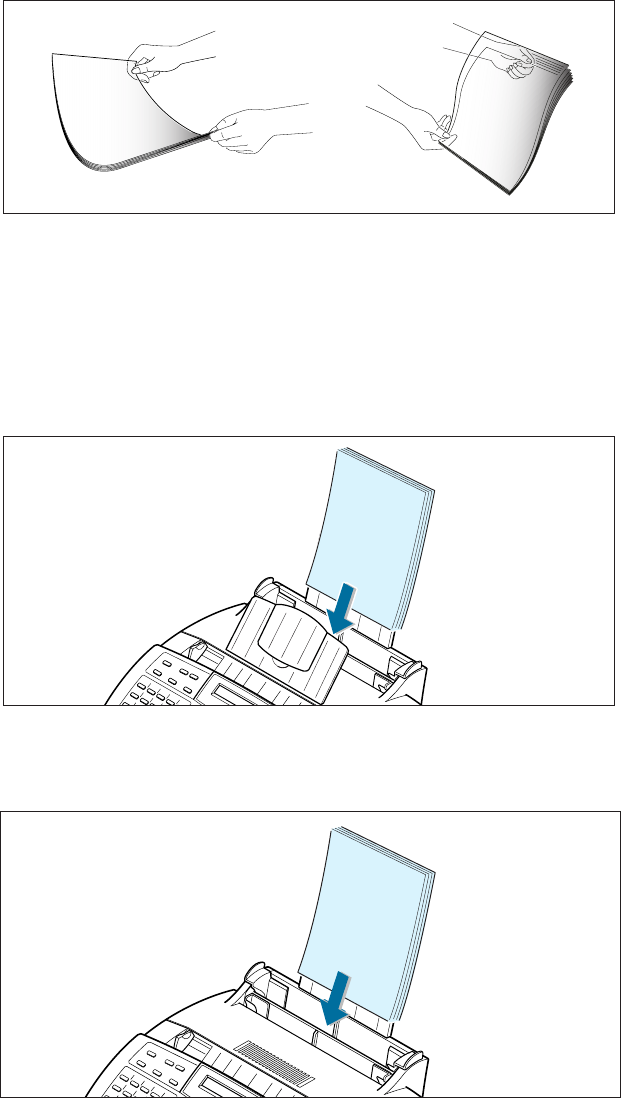
3.8 Printing and Scanning
• For transparencies:
- Hold the transparencies by the edges and avoid touching the print
side.
- Fan the stack of transparencies to prevent feeding failures.
Be careful not to scratch or leave fingerprints on the print sides.
3. Load the print material into the paper tray. Load only as much paper
as will fit beneath the lip protruding from the paper-length adjuster.
Neatly stacking the paper before loading will help prevent print
problems. Do not mix types. See the following directions to load each
type of print material.
• Load paper with the print side facing up.
LETTERHEAD
• Load letterhead paper face up with the top of the page going
into the tray first.
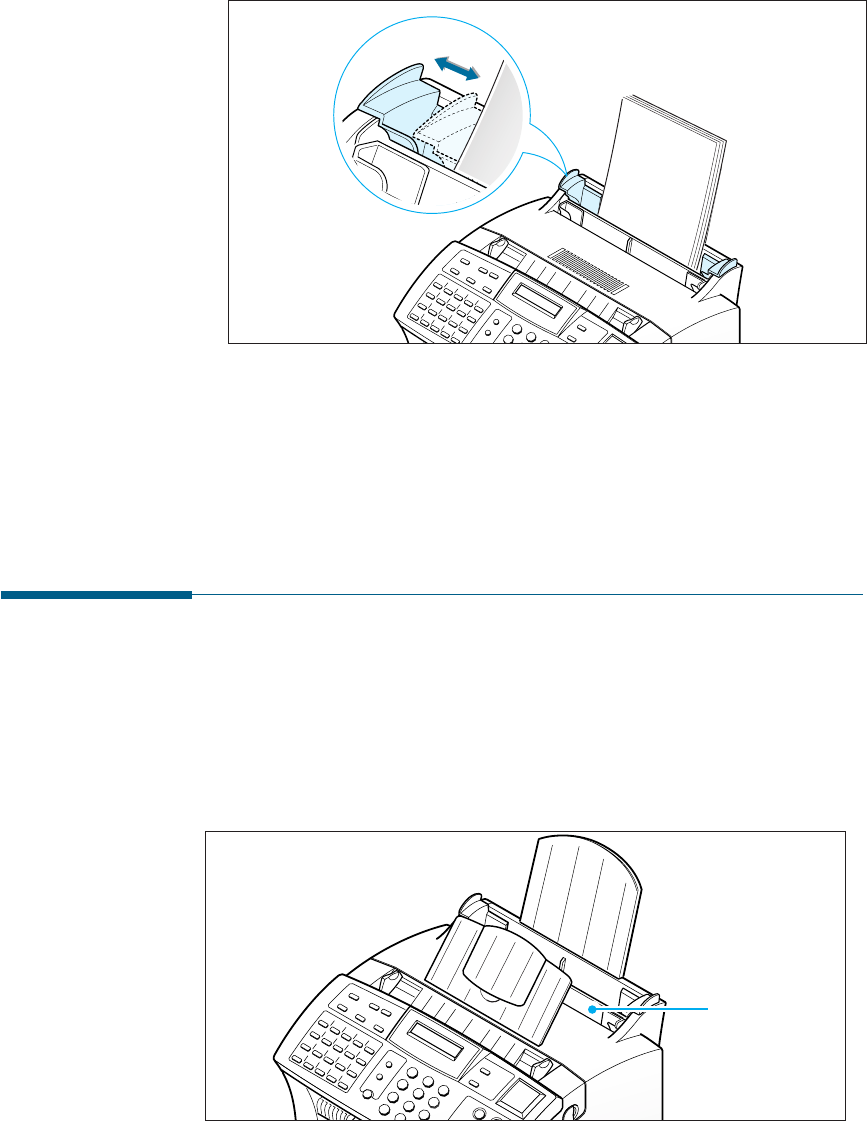
3.9
Printing and Scanning
4. Slide both paper adjusters to fit against the paper’s edges. Ensure
the paper line flat in the tray.
Print Side Up
Most papers prints better on one side than on the other. This is
especially true for coated or specially treated paper. The print side is
usually indicated on the paper package. Be sure to insert the paper into
the paper tray of the printer with the print side up.
Using the Manual Paper Input Tray
To load a single envelope, card stock, or specialty paper, use the manual
paper input tray. When you use the manual input tray, you must feed
one piece of media at a time. Manual feeding is helpful when printing on
heavy paper or when experiencing paper jam with the automatic paper
input tray.
Manual paper
input tray
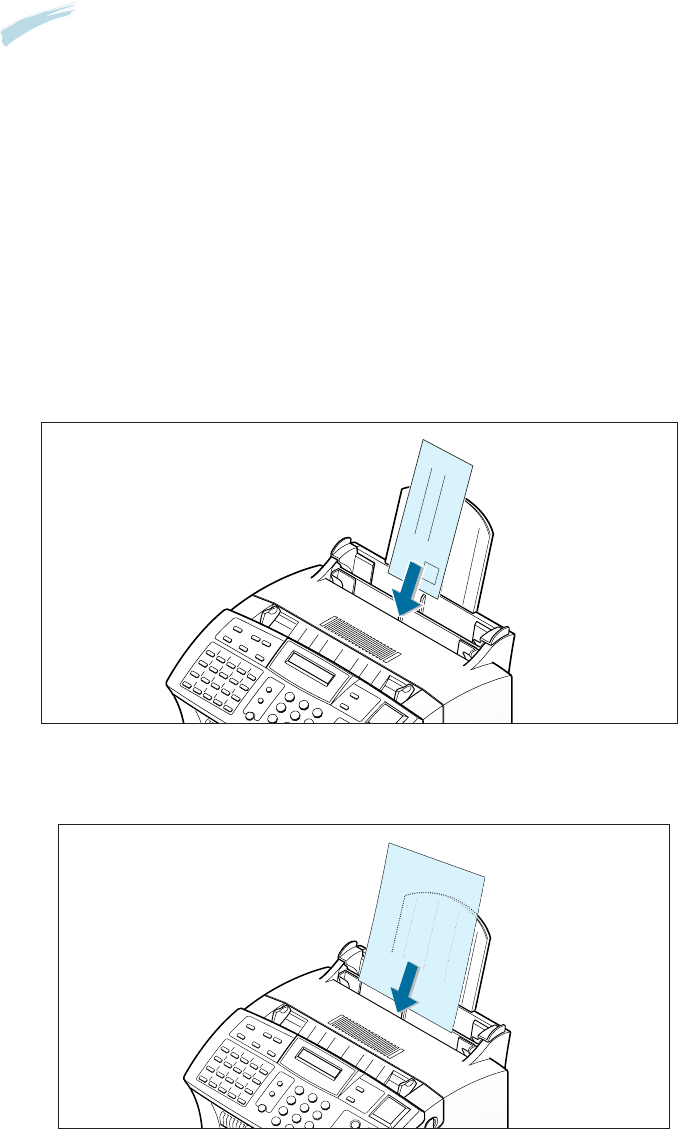
3.10 Printing and Scanning
Notes:
• Make sure that you select the Manual for Paper Source and the correct
paper size and type from your software application before starting your
print job. See page 3.14.
• When you use the manual paper tray, the paper must loaded in the
automatic paper tray. By doing so, you can prevent the paper jam which
might occur in the manual tray.
1. Place the print media in the manual input tray with print side facing
up and adjust the paper guides to the width of the print media.
• Load a sheet of the envelope with the flap side facing away from
you. Make sure that the stamp area is at the top left and the end of
the envelope with stamp area enters the tray.
• Load transparencies face up with the adhesive strip on top
going into the tray first.
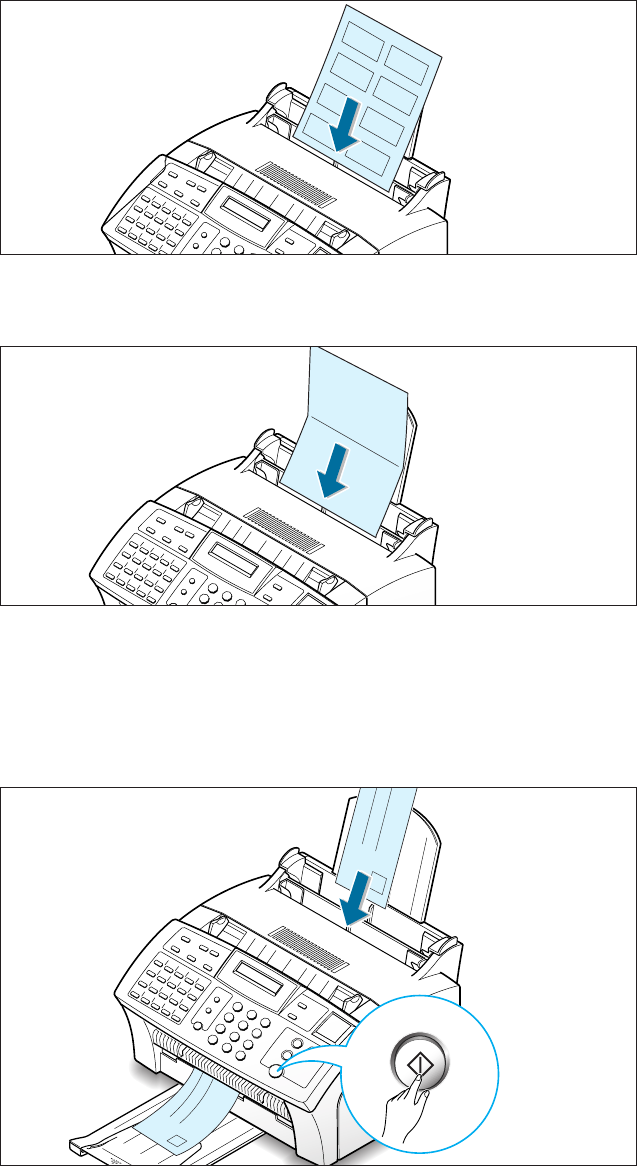
3.11
Printing and Scanning
Start/Enter
2. In your computer, start printing of the document. the display on the
front panel displays ‘PC PRINTING...’ and ‘PRESS START.’
3. Press Start/Enter to start manual feeding. If you have more than
one page to print, press Start/Enter for each page.
• Load a sheet of the label with the adhesive backing facing away
from you.
• Load a sheet of the card stock with print side up, short edge
first.

3.12 Printing and Scanning
Specialty Paper Guidelines
• Read all instructions that come with special paper for important
information regarding how to achieve the highest print quality.
• It is recommended to feed one sheet at a time for special paper types.
• For transparency film, follow these guidelines:
- Let printed sheets of film dry completely before storing.
- When a sheet of film has dried completely, cover its printed side with
a sheet of plain (not coated) paper before storing; This is
recommended even if placed in a clear file or plastic holder.
- Do not leave the film in the paper tray for long periods of time as
dust and dirt may accumulate, resulting in poor copy quality.
- To avoid fading, do not expose the printed film to prolonged direct
sunlight.
- Store unused papers and films flat. Do not remove papers from their
protective packaging until ready for use.
- Store unused film at temperatures between 59oF to 86oF (15oC to 30
oC). The relative humidity should be between 10% and 70%.
• For labels, follow these guidelines:
- Verify that the labels’ adhesive material can tolerate fusing
temperature of 200°C (392°F) for 0.1 second.
- Make sure that there is no exposed adhesive material between the
labels. Exposed areas can cause labels to peel off during printing,
which can cause paper jams. Exposed adhesive can also cause
damage to printer components.
- Do not feed a sheet of labels through the printer more than once.
The adhesive backing is designed for one pass through the printer.
- Do not use labels that are separating from the backing sheet or are
wrinkled, bubbled, or otherwise damaged.
• If the print density of your page is very high, light paper stock may
curl slightly due to the large amount of toner. To print dense graphics,
try printing on heavier stock.
• Do not use paper that is thicker than the specifications as it may
damage the toner cartridge.